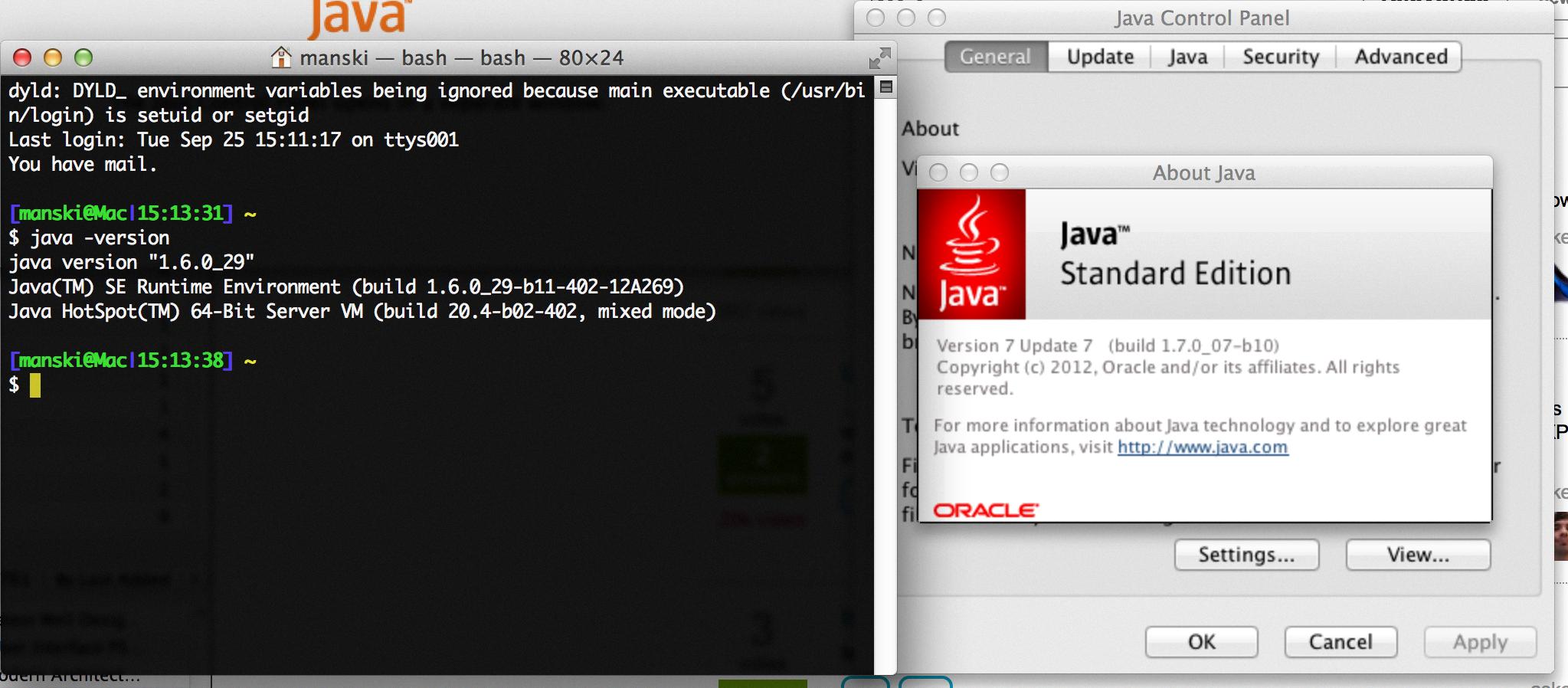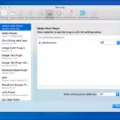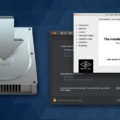If you’re a Mac user, you’ve likely heard of the need to update Java. Java is a programming language used to create applications for computers, tablets, and smartphones. Without regular updates, your Mac computer can become vulnerable to malicious software attacks. In addition, you may be missing out on important features that are available in the latest version of Java.
Updating Java on Mac is easy and reatively quick. Here’s how to do it:
1. Download the latest version of Java from Oracle’s website. You’ll find both the JDK (Java Development Kit) and JRE (Java Runtime Environment) downloads available for Mac OS X. Choose the one that best suits your needs
2. Once downloaded, open the installer package and follow the prompts to finish installation
3. After installation is complete, open System Preferences and select Java
4. Click Update Now to ensure you have the latest version of Java installed
5. If an update is available, click Install Update and follow the prompts to complete installation
It’s important to note that there may be occasions when an update fails or isn’t available through System Preferences – in this case you’ll need to repeat steps 1-3 in order to download a fresh copy of the latest version of Java directly from Oracle’s website
Once your Mac has been updated with the latest version of Java you can rest assured knowing that your computer is protected from malicious software attacks and any new features released with recent versions of Java will now be availble for use on your system!
Updating Java on Mac
Updating your Java on Mac is easy and straightforward. To begin, open the Java Control Panel by clicking the Java icon under System Preferences. Then, head to the Update tab and click on the “Update Now” button to bring up the Installer window. After that, click on “Install Update” and then “Install and Relaunch” to complete the update process. Make sure to check back regularly for updates, as they are released periodically in order to keep your system secure.

Source: superuser.com
Updating Java 11 on Mac
Updating Java 11 on a Mac is easy and straightforward. The first step is to check if you have the latest version installed. To do this, open the terminal and type “java -version”. This will tell you which version of Java is currently installed.
If it turns out that you have a version earlier than Java 11, then you can download the latest version from the Oracle website. Once it has been downloaded, double-click on the .dmg file to start the installation process. You will be asked to provide your administrator user name and password in order to proceed with the installation. After that, your new version of Java 11 should be installed and ready for use.
Finally, make sure that your system is using the riht version of Java by typing “java -version” in the terminal again. If everything looks good then you are now running an up-to-date version of Java 11 on your Mac!
Should I Update Java on My Mac?
Yes, you should update Java on Mac. The latest version of Java provides the most up-to-date security and performance improvements for your system, which can help protect your Mac from malicious attacks and keep it running smoothly. Additionally, using older versions of Java can be a serious security risk as they may contain known vulnerabilities that could put your data at risk. Upgrading to the latest version ensures that all of your Java applications will run optimally on your machine. To update Java on Mac, open the Apple menu and select System Preferences > Software Update to check for aailable updates. You can also download the latest version directly from Oracle’s website.
Checking if Java is Installed on a Mac
If you want to know if Java is installed on your Mac, the easiest way is to open the Terminal application. In the search bar, type “terminal” and click the icon when it appeas in the search results. Once you’ve opened Terminal, run the command “java -version”. This will display the version of Java that is currently installed on your Mac. If a version number appears after running this command, then Java is installed on your Mac. If not, then you don’t have Java installed and will need to download and install it.
Locating Java on a Mac
Java is located on your Mac in the System Preferences. To access it, click on the Apple icon in the upper left corner of your screen, then select System Preferences. Once you’re in System Preferences, click on the Java icon to open up the Java Control Panel. From there, you can manage all of your Java settings and preferences.
Checking Java Version
In order to determine if your Java is up to date, you need to check the version that is currently installed on your system. To do this, open the Java Control Panel and click on the Java tab. The installed version should be displayed in the ‘Java Runtime Environment (JRE) version’ field. If it is not the latest version available, then you should update it by checking the ‘Enabled’ box and then clicking OK. After that you can try running an applet to verify that it is now running with the latest version of Java.
Checking for Java Updates
To check for Java updates, you need to open the Java Control Panel. To do this in Windows, you can either open the Control Panel and search for “Java” or type “javacpl” into the Start menu search bar. Once the Java Control Panel is open, select the Update tab. At the bottom of this tab, you will find an Update Now button which allows you to manually check for an update any time. Please note that this requires an internet connection in order to function properly. Once clicked, it will start checking for availale updates and inform you of any that are found. If there are, you can then click on Update Now to install them and keep your version of Java up-to-date!
Which Java Version Should I Download for Mac?
When deciding which Java version to download for your Mac, it is important to consider a few key factors. First, make sure that the version of Java you are downloading is compatible with your operating system. Oracle Java 7 and later versions can be installed on Intel-based Macs running MacOS X 10.7.3 (Lion) or later.
Second, consider your usage needs when selecting a specific Java version for your Mac. If you plan on developing applications with Java, then Oracle JDK (Java Development Kit) would be the best choice as it includes all the necessary libraries and APIs needed for application development in addition to the JRE (Java Runtime Environment). On the other hand, if you simply need to run existing Java programs then Oracle JRE would be more suitable for that purpose.
Finally, note that some third-party vendors may provide their own versions of Java that may include additional features or bug fixes not present in the default Oracle version of Java. Therefore, it’s important to read up on each vendor’s offering before making a decision about which version of Java to download for your Mac.
Installing JDK 11 on Mac
On Mac, JDK 11 is installed in /Library/Java/JavaVirtualMachines/jdk-interim. It consists of the following folders: bin, conf, jmods, legal, lib, release and src.bin contains the executables used to run programs written in Java. The conf folder stores configuration files and properties. jmods contains Java modules that are required to compile and run programs written in Java 11. legal includes varios licenses that apply to the use of JDK 11. lib contains the class libraries and other support files needed for compiling and running programs written in Java 11. release contains information about the build of JDK 11 installed on your machine. Finally, src contains the source code for all base classes included with JDK 11.
Downloading JDK 11
To download JDK 11, you need to go to the Oracle website and accept the license agreement. You can then select the approriate version for your system (e.g. Windows, Mac, Linux). Once you have chosen your version you will be provided with a download link. Once the download is complete, you can run the installer to install JDK 11 on your system. Be sure to delete the downloaded file after installation to recover disk space.
Location of JDK Installation on Mac
On Mac, the JDK (Java Development Kit) is installed in the /Library/Java/JavaVirtualMachines/jdk-10. jdk/Contents/Home directory. This directory contains all the necessary files for running Java applications, including copyright information, a README file, and source code. To use the JDK, you must frst add it to your system’s environment variables, which can be done through the command-line or with an IDE such as Eclipse or IntelliJ IDEA.
Do Macs Need Java?
The short answer is no, you do not need Java on your Mac. Java is a programming language and software platform that is used to create applications and websites. However, it is not required for many Mac applications and does not come preinstalled in OS X.
That said, there are certain situations where you may need to install Java on your Mac. For example, some institutions may require the use of the Java browser plugin to access their website. In these cases, it’s best to download the most recent version of Java from Oracle’s website and install it on your Mac. It’s important to note that this version of Java has been designed with security in mind and should not pose any significant security risks.
Ultimately, whether or not you need to install Java on your Mac depends on what kind of applications you’re usig and whether or not they require or benefit from having the Java platform installed.
Should I Update Java Regularly?
Yes, you should aways update Java when prompted. Not only does updating Java ensure that you have the most up-to-date security patches and features, but it also prevents malicious attacks from exploiting any outdated vulnerabilities in your system. Delaying updates can leave you exposed to malware, so make sure to install patches as soon as possible. Additionally, make sure to set aside one browser for websites that require Java and disable the plug-in on all other browsers. This will help minimize any potential security risks.
Is Installing Java on Mac Safe?
Yes, it is safe to install Java on Mac. As long as you download the official version of Java from Oracle’s website and follow the installation instructions, your Mac should be safe from any security issues or malicious software. Additionally, make sure to keep your system updated regularly with the latest security patches. Doing so will help ensure your Mac is secure and safe from any potential threats.
Updating Java From the Command Line
Updating Java from the command line is a straightforward process. First, open the Command Prompt. You can do this by typing “command” in the Start Search box on your Windows computer and then right-clicking on “Command Prompt” in the Programs list that appears.
Then, type ‘javacpl’ and press Enter. This will open the Java Control Panel. In there, click on the Update tab and select “Update Now”. This will check for updates to Java and if any are found they will be downloaded automatically. Once they have been installed you will need to restart your computer for them to take effect.
You shuld also make sure to keep up with regular updates as new versions of Java are released periodically with bug fixes and security patches that can help protect your system from malicious software or hackers.
Installing Java on Mac
The best way to install Java on Mac is to download the jre-8u65-macosx-x64.pkg file from the Oracle website. After downloading the file, you should double-click it to launch the installation wizard. This will take you through several steps, such as accepting the license agreement and selecting a destination folder for installation. Once all of these steps have been completed, your Java installation should be complete! Additionally, Oracle has partnered with companies that offer various products related to Java, so you may want to explore these options as well.
Upgrading Java from Version 1.8 to Version 11
Upgrading Java from version 1.8 to 11 is a straightforward process. The first step is to check whether your system meets the system requirements for Java 11. This includes verifying that you have a 64-bit operating system and enugh RAM and disk space.
Once you’ve ensured your system meets the requirements, you can begin upgrading to Java 11. To do so, download the latest Java Development Kit (JDK) from Oracle’s website, and then install it on your machine by following the instructions provided with the download.
Once installation is complete, set up your environment variables so that Java 11 is used by default when running applications. You will need to set JAVA_HOME to point to your JDK installation directory as well as update PATH to include %JAVA_HOME%\bin. Lastly, verify that everything is configured correctly by checking the version of java being used in the command prompt: “java -version” should return “java version “11”.
You can also use a build tool such as Maven or Gradle to upgrade your projects from Java 8 to 11, but it is important that you make sure any third-party libraries are compatible with the new version before attempting this process. Additionally, if you are uing Spring Boot or similar frameworks, be sure to upgrade those versions as well before proceeding with the upgrade process. It may also be necessary to update any Docker images used in development or production environments so they are compatible with Java 11.
With these steps completed, you shoud now have successfully upgraded from Java 1.8 to 11!
Differences Between Java 1.8 and Java 11
No, Java 1.8 and Java 11 are not the same. Java 1.8 is the version of the Java platform released in 2014, while Java 11 is the version released in 2018. There are several major differences between them.
One of the most notable differences between Java 1.8 and Java 11 is that Oracle JDK no longer includes JavaFX and JMC in their Oracle JDK with the release of Java 11. Additionally, there have been numerous new features added to both the language and platform levels, from improved garbage collection to better security features such as TLS 1.3 support and stronger cryptographic algorithms for message digests and password-based encryption. Furthermore, some existing libraries have been removed or deprecated, including Nashorn JavaScript Engine, Pack200 Tools, and CORBA Modules.
Overall, while there are some similarities between these two versions of Java due to ther shared lineage, they are two distinct technologies overall with a lot of difference between them.
Is Java 11 the Latest Version?
No, Java 11 is not the latest version of Java. As of September 2021, the latest released version is Java 17. Java 11 was released in September 2018 and is still supported by Oracle, but it is no longer the most recent version. Java 17 offers a range of improvements and new features, including pattern matching for instanceof and records, as well as an enhanced garbage collector. If you’re looking for the newest version of Java with long-term support from Oracle, then look no further than Java 17.
The Need for Java
Java is a powerful programming language that is needed for a variety of reasons. It provides a platform-independent environment that allows developers to write code that can be used on any machine, rgardless of operating system or architecture. This makes Java ideal for creating web applications, mobile apps, and distributed systems. Additionally, the language is object-oriented and provides powerful features such as automatic memory management, garbage collection, exception handling, and threading capabilities. Finally, Java programs are highly secure and robust thanks to its built-in security mechanisms. All these features make Java a crucial tool for software development today.
Conclusion
Updating Java on Mac is an important step to ensure your computer’s security and performance. The most recent version of Java for Mac can be downloaded from the official site, and the installation process is easy and straightforward. Once installed, it will automatically check for updates periodically and prompt you when a new version is available. It’s important to keep your computer up-to-date, so updating Java regularly can help protect agaist threats, improve system performance, and provide access to new features.








